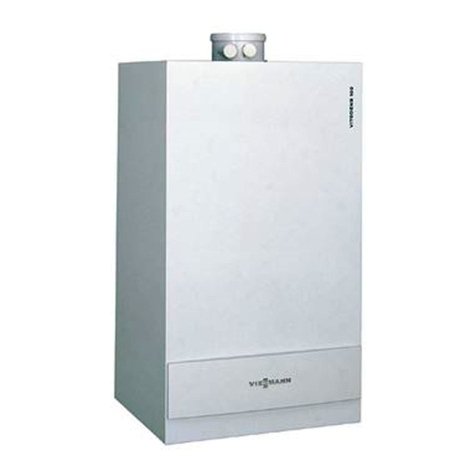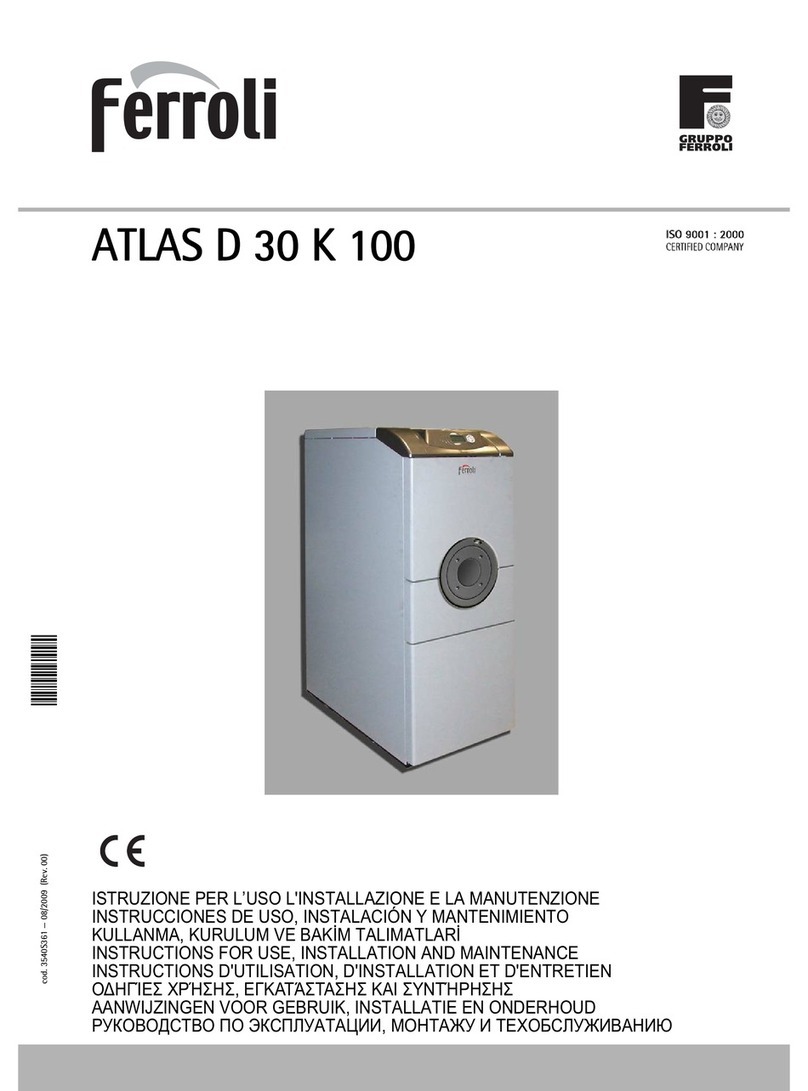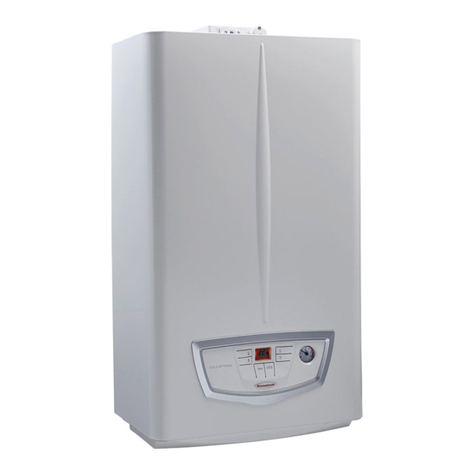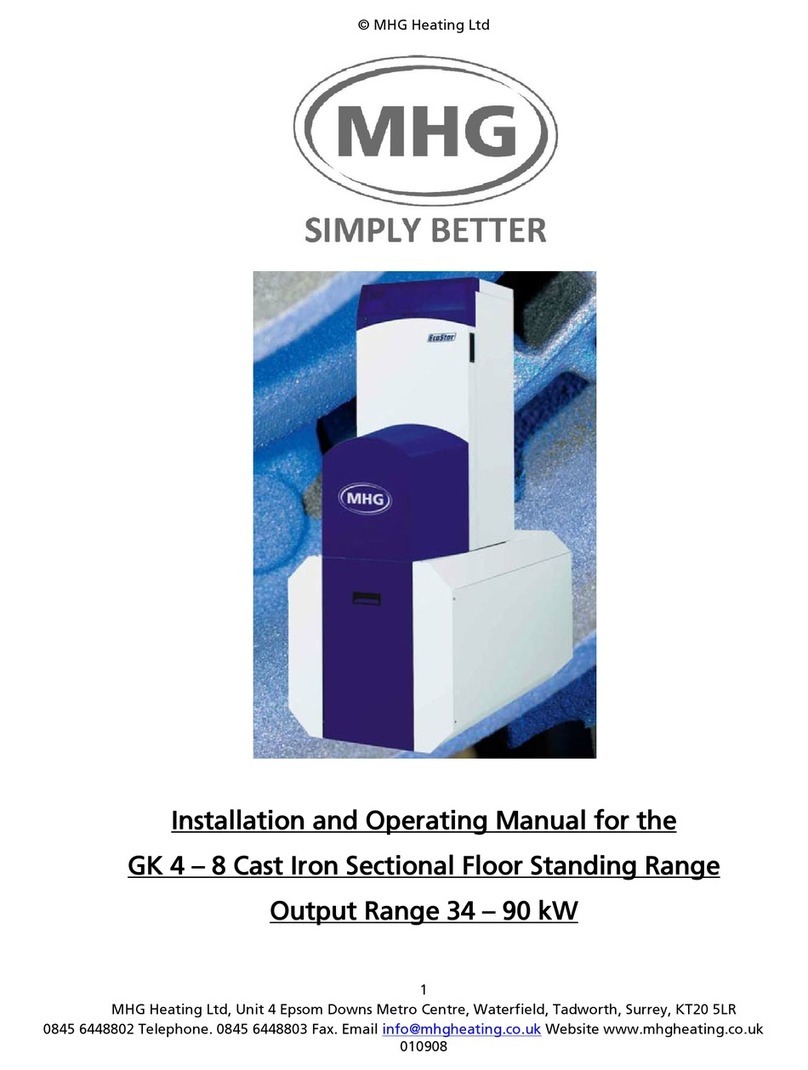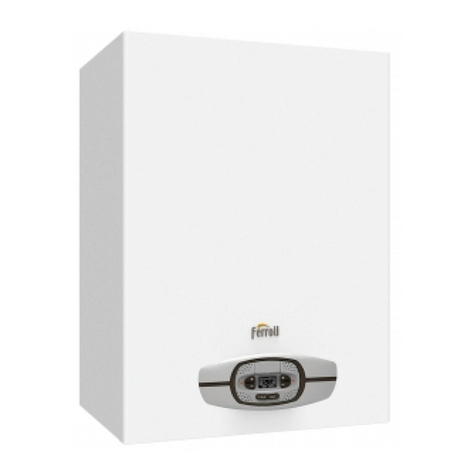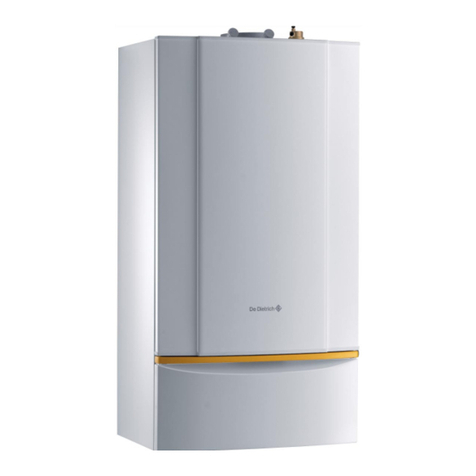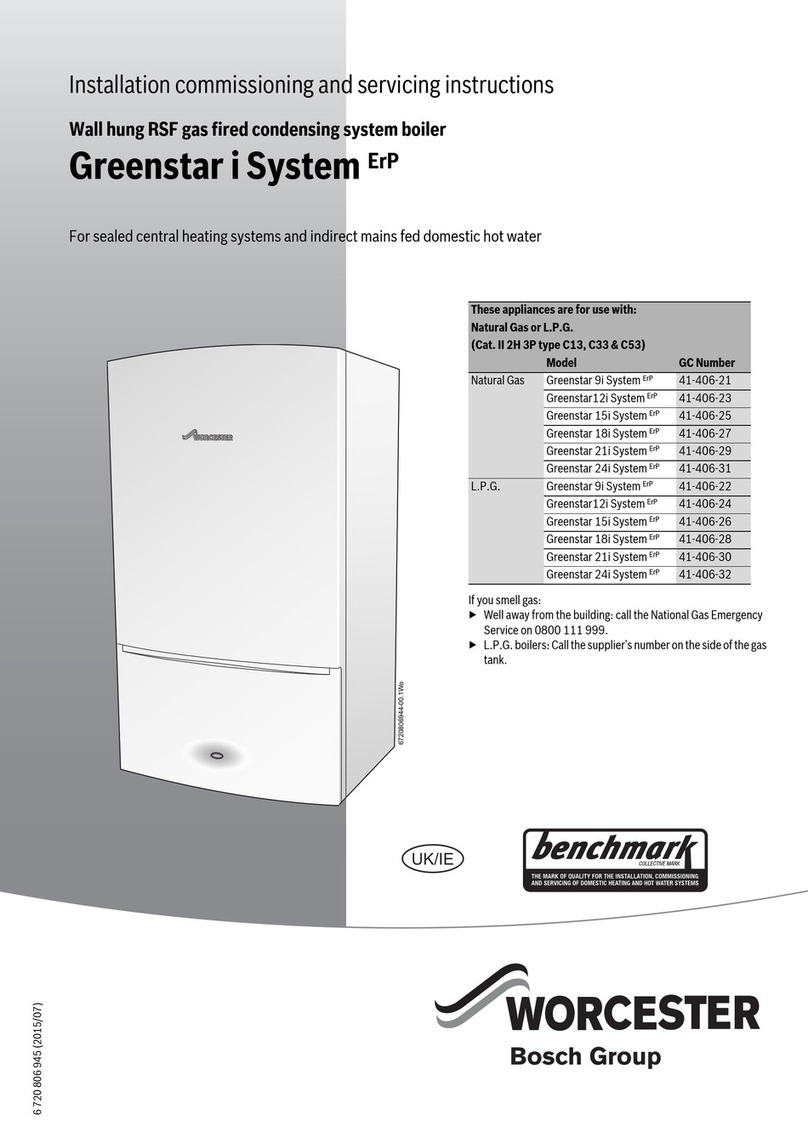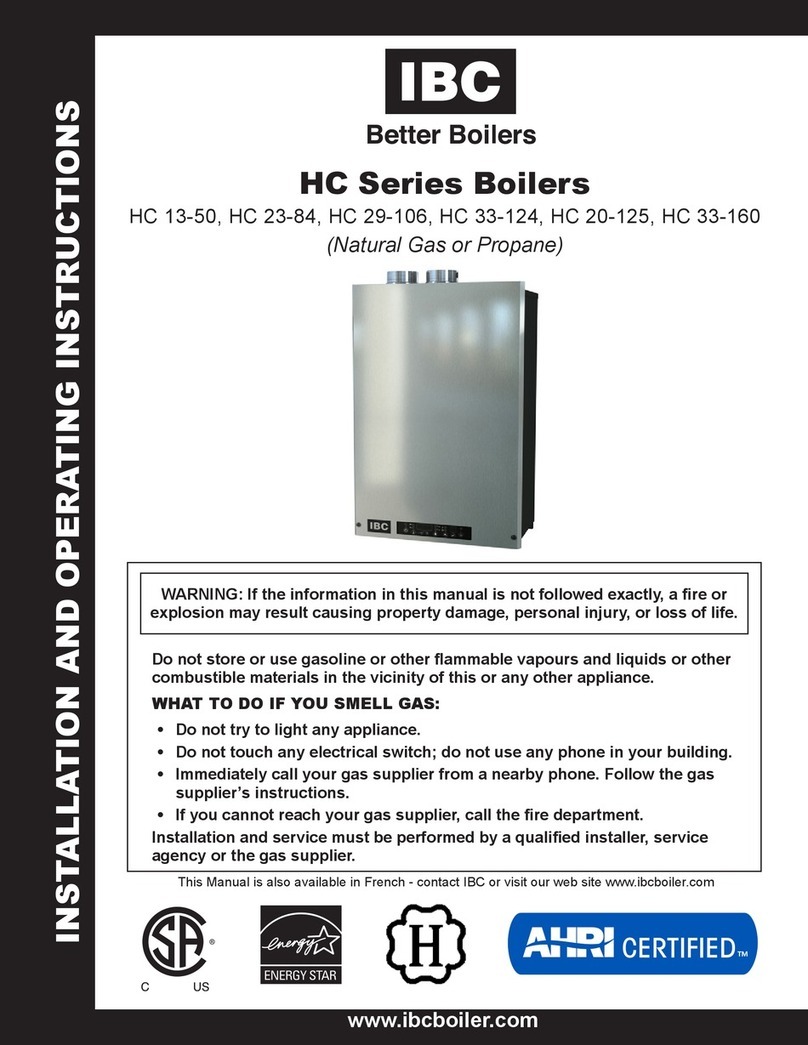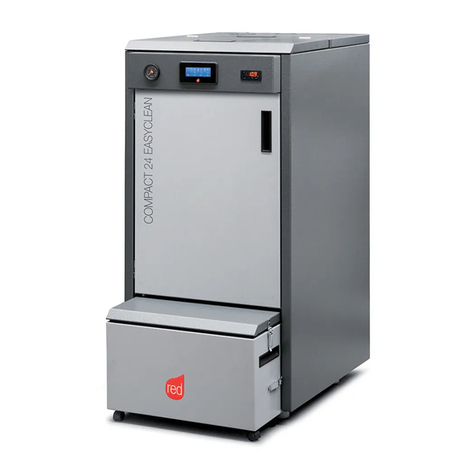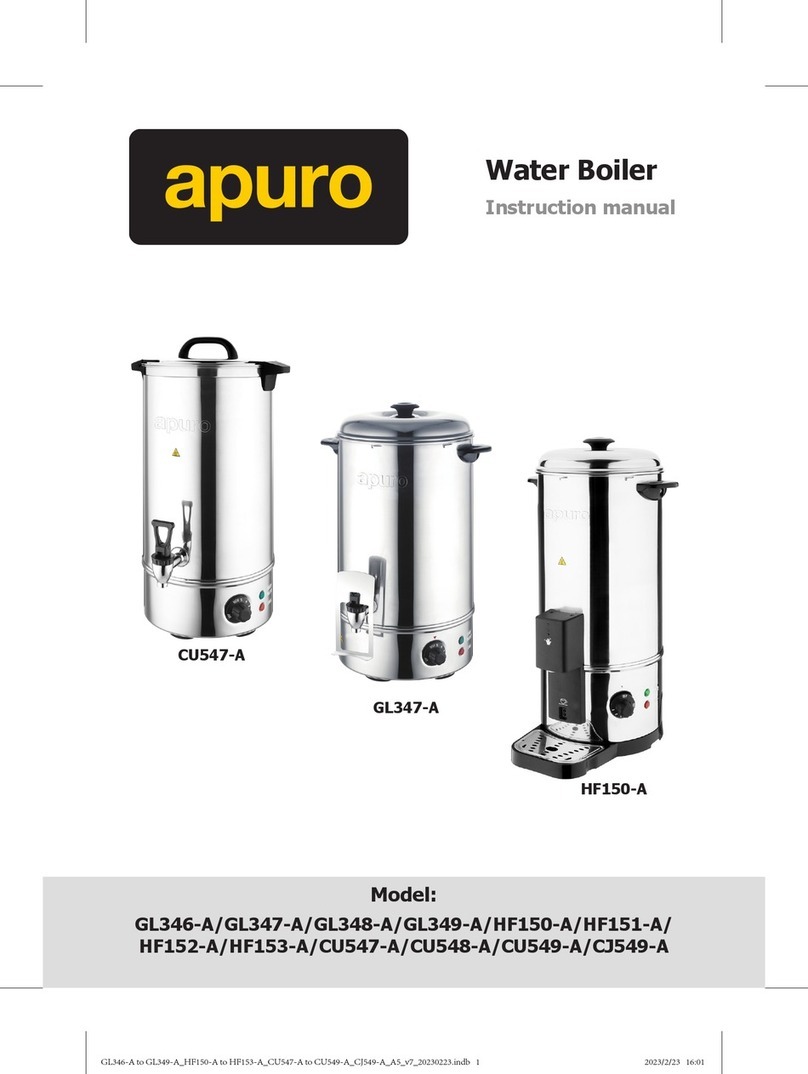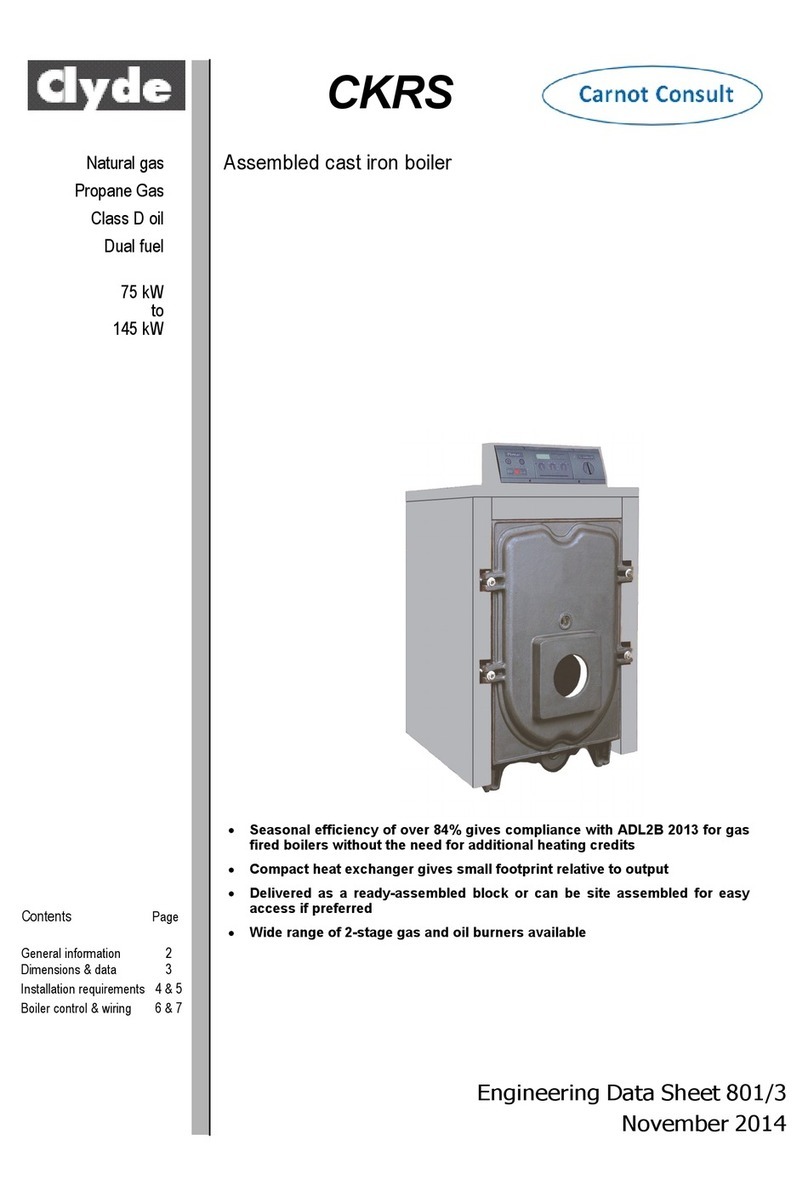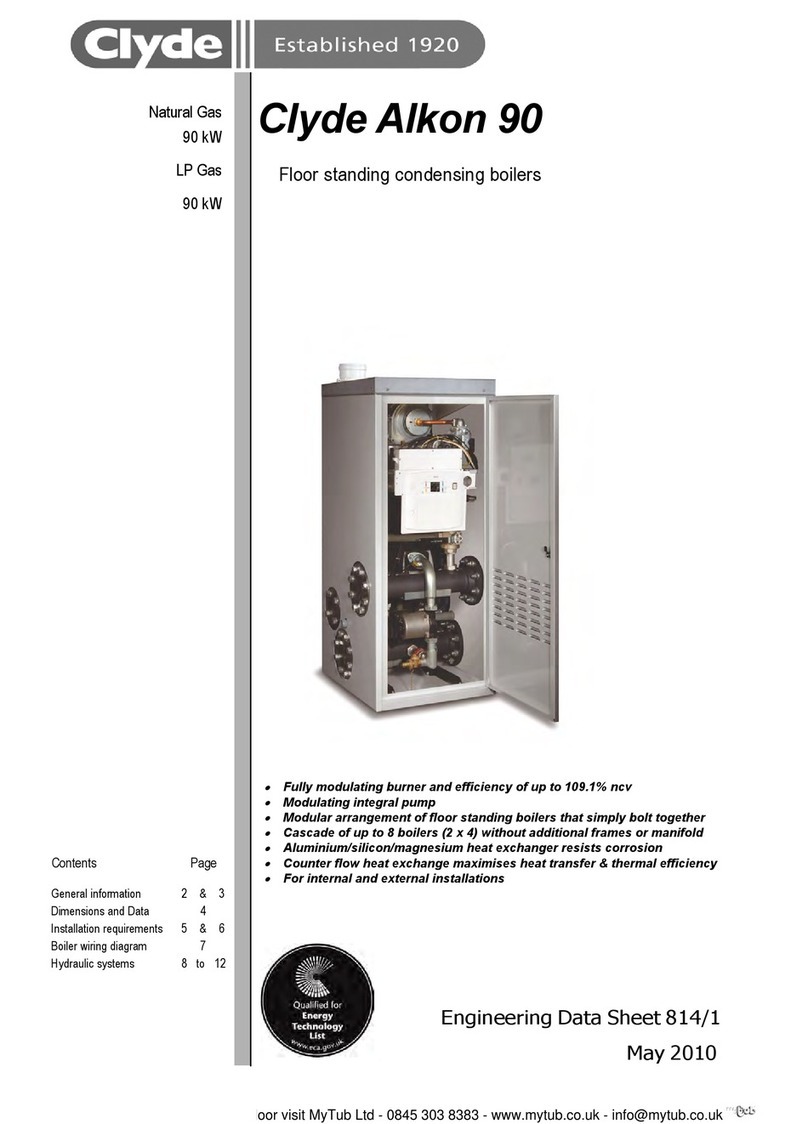Installation requirements
Regulations governing installation
CG boilers should be installed in accordance with all
prevailing regulations and codes of practice, including the
Building Regulations, Health and Safety Regulations PM5,
Water Bylaws and the current Gas Safety (Installation and
Use) Regulations. Detailed relevant guidance will also be
found in;
BS 6644 :2005 Installation of appliances exceeding 70
kW net input
BS 5440-2 Ventilation for appliances not exceeding
70 kW net input
BS 6891 Low pressure gas installation pipework
of up to 28mm (R1)
BS 5449 Forced circulation hot water central
heating systems for domestic premises
BS 6880 Code of practice for installation of low
temperature hot water heating systems
of output exceeding 45 kW
CIBSE Guides B and C and Commissioning Code B
Institution of Gas Engineers Utilization Procedures 1, 1A,
2, 4, 7 and 10.
Water treatment
CG boilers have a stainless steel heat exchanger and
care must be exercised to ensure that the system water
and any water treatment is compatible.
Whenever a new boiler is connected to an existing
system, the pipework must be thoroughly cleaned and
flushed. This is to remove debris, rust particles, carbonate
deposits and any existing water treatment that might be
incompatible with the heat exchanger. New systems must
also be thoroughly flushed to remove debris and flux
deposits. Clyde recommend that a permanent means of
filtration be fitted into the return pipework, such as a
sludge trap, hydrocyclone or full flow duplex filters. The
boiler guarantee will be invalid if waterways are blocked
by debris or carbonate deposits.
The pH value of the system water should be measured to
ensure that it is between 5 and 10.5. If system water is in
contact with aluminium, the pH value must be less than
8.5. Temporary hardness (calcium carbonate and
magnesium carbonate) can be removed by boiling and its
effects limited by preventing ingress of fresh, untreated
water. Permanent hardness (eg sulphates and chlorides)
must not exceed 50 mg/litre. The boiler guarantee will be
invalidated by the use of incorrect or incompatible water
treatment. Specialist advice should be obtained, eg from;
Fernox Tel. 01483 793200
For full information on cleaning, flushing and protecting
hot water systems, refer to BSRIA Application Guide AG
1/2001.
Deaeration
It is a condition of warranty that there is effective air
separation and removal from the system. The air
separator should be fitted at the hottest part of the system.
Boiler condensate
CG boilers have a 25mm flexible condensate drain that is
compatible with standard plastic waste pipe. Do not use
other materials, as they will corrode. The pipe size must
not be reduced and there must be a continuous fall to
drain. As a further precaution against freezing,
condensate pipes should be run internally whenever
possible and lagged when run externally.
Pressurisation of systems
CG boilers should be installed as part of a pressurised
(sealed) or open vented system with a minimum pressure
of 0.5 bar. The maximum allowable pressure for the
boilers is 6 bar. They are not to be used with a gravity
system.
Boiler location
CG boilers must not be installed external to a building.
The boiler must be mounted on a sound internal wall,
capable of supporting its weight. The boiler location must
be frost-free and adequately ventilated (see below).
Contamination of the combustion air by inflammable
vapours, high dust levels or halogenated hydrocarbons
will constitute a safety hazard and will damage the boiler.
The following minimum clearances around the boiler
should be observed;
Front 500 mm
Sides 20 mm
Below 100 mm
Above 300 mm (subject to flue installation requirements)
Air supply and ventilation
Adequate air for combustion and ventilation is essential to
the safe operation of a boiler. If the boiler is installed with
a Type C balanced flue, BS 6644:2005 calls for minimum
ventilation of 2 cm2free area per kW net input at both high
and low level unless the ambient temperature of the plant
room ceiling exceeds 40°C.
For a single 60 kW boiler with a Type B powered flue, the
ventilation requirements of BS 5440-2 apply, and they are
partly summarised in Table 1. For ventilation direct to
outside air, the requirement is for 5 cm² per kW net rated
heat input above 7 kW.
Table 1 Ventilation for single boiler installations complying
with BS 5440-2
When the installation comprises multiple boilers or single
boilers above 70 kW net input with Type B flues, the
ventilation requirements of either BS 6644:2005 or
IGEM/UP/10 must be met. Table 2 shows the
requirements of BS 6644:2005. This standard requires
natural ventilation at both high and low levels to the
outside air, and is based on the net input of the boilers.
Appliance Ventilation direct to outside air
CG 60 248 cm²
Ventilation direct to
outside air
Total kW input (net)
Low level 4 cm² per kW of total rated net
input
High level 2 cm² per kW of total rated net
input
Table 2 Ventilation for multiple boiler installations in a boiler
room complying with BS 6644:2005
EDS769/4 page5















